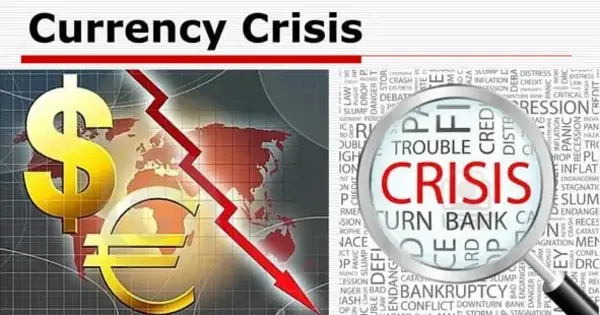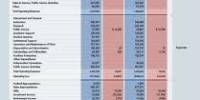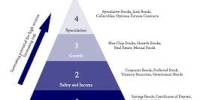A currency crisis is a type of financial crisis that is frequently linked to a real economic crisis. It is a situation where there is a sharp decline in the value of a country’s currency relative to other currencies. A currency crisis increases the likelihood of a banking or default crisis. During a currency crisis, the value of foreign-denominated debt will skyrocket in comparison to the declining value of the home currency.
There is widespread uncertainty about whether a country’s central bank has sufficient foreign exchange reserves to maintain the country’s fixed exchange rate, if one exists. It can be triggered by a variety of factors, including political instability, economic imbalances, and external shocks such as a sharp drop in commodity prices or a sudden increase in interest rates. The crisis is frequently accompanied by a speculative attack in the currency market. A currency crisis is caused by chronic balance of payments deficits, and is thus also known as a balance of payments crisis. A currency devaluation is a common outcome of such a crisis.
A currency crisis is a situation where there is a sudden and significant decline in the value of a country’s currency, leading to a loss of confidence in the currency and a rush by investors to sell off their holdings of that currency. Currency crises are typically characterized by high levels of volatility, as exchange rates can fluctuate rapidly and unpredictably.
There are several factors that can contribute to a currency crisis, including:
- High levels of debt: When a country accumulates large amounts of debt, investors may become concerned about the country’s ability to repay its debts, leading to a loss of confidence in the currency.
- High inflation: If a country experiences high levels of inflation, it can lead to a decline in the value of its currency, as investors become concerned about the purchasing power of that currency.
- Political instability: Political instability, such as a change in government or civil unrest, can also contribute to a currency crisis, as investors may become concerned about the country’s ability to maintain stability and make timely policy decisions.
External factors: External factors, such as changes in global economic conditions or shifts in the prices of commodities, can also contribute to currency crises.
When a currency crisis occurs, it can have significant economic and social impacts, including higher prices for imported goods, reduced purchasing power for citizens, and increased borrowing costs for businesses and governments. Governments may take steps to try to stabilize their currencies, such as increasing interest rates, intervening in currency markets, or seeking assistance from international organizations.
Financial institutions and the government will struggle to meet debt obligations, potentially resulting in an economic crisis. Causation can also be reversed. When a country is experiencing a banking or default crisis, the likelihood of a currency crisis increases, whereas it decreases when the economy is experiencing strong GDP growth and high levels of foreign exchange reserves. A central bank will frequently increase currency issuance to offset the damage caused by a banking or default crisis, which can reduce reserves to the point where a fixed exchange rate breaks. The interdependence of currency, banking, and default crises raises the possibility of twin or even triple crises, which increase the economic cost of each individual crisis.
















